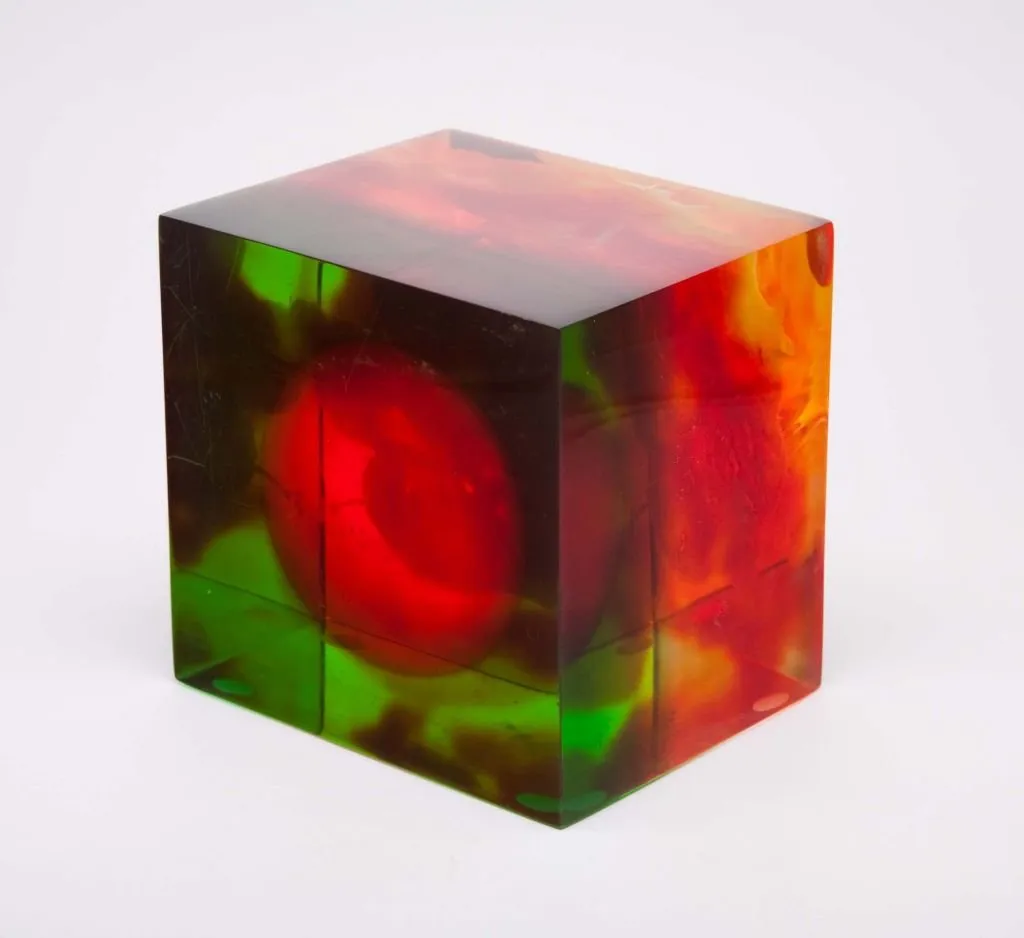(6 November 1927 – 21 August 2008)
Byng’s artistic career started in painting where he experimented with transparent glazes to create colored light effects on semi-abstract figures but he was best known for his later use of plastic in sculpture. He first used the material when he cut a female figure in laminated plexiglas in 1966 and used it in a painting. By 1968 he was creating freestanding non-representational sculpture in an attempt to eliminate complex form and maximize the effect of colored light in his chosen materials.
He developed techniques of coloring the outside of plastic blocks and of laminating plastics of different color, creating square and rectangular forms with a highly polished and seamless finish that belied the high degree of technical skill and processing required to make them. In 1972, he began to use lucite as his medium instead of plexiglas as lucite offered him greater flexibility in creating color effects. Untitled (Byng 74 A 70 2.2) was one of sixteen cubes of identical size that Byng cast in different colors and exhibited at the Martha Jackson Gallery in 1974. It was created using successive casts in a mold that was tipped between casts to create a hollow centre that was then filled in white and sealed. The whole was then put under pressure for 12 hours in an industrial autoclave to remove air bubbles, then heated to cure the material into a solid, then milled, polished and annealed to complete the work. It is displayed on a transparent stand to allow light to enter and refract from all sides.
By 1980, Byng had stopped making sculpture and was moving back to painting, partly due to the toxicity of plastics.
